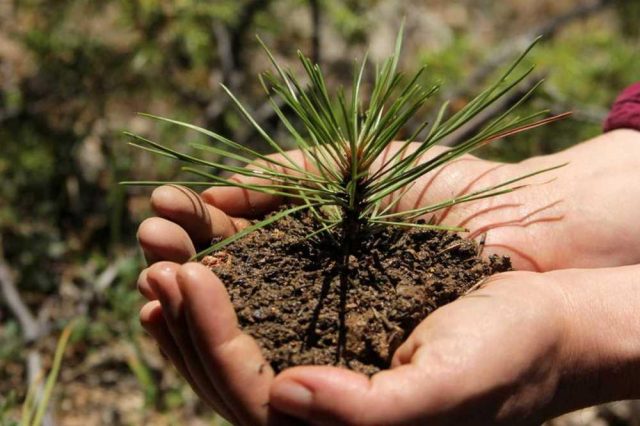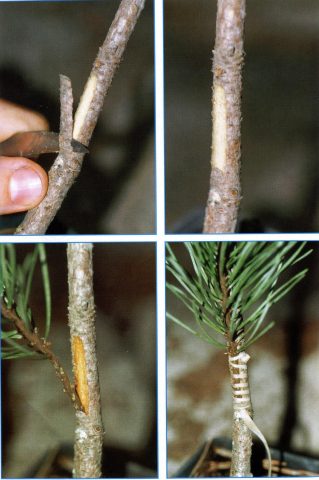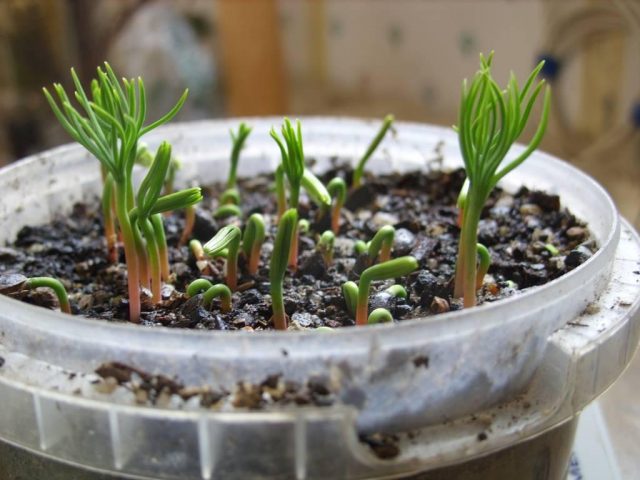Content
Many gardeners are convinced that pine propagation at home is possible only by seeds. However, this is absolutely not the case, the tree can also be propagated by cuttings or grafting. The article provides detailed instructions for propagating this amazing coniferous plant in all possible ways.
Features of the reproduction of different types of pine
First of all, you need to decide on the type of pine that you plan to grow. Different species have their own characteristic breeding characteristics. So, for example, when propagating by branches, the European pine takes root best. However, in the climate of central Russia, Scots pine and Siberian cedar pine are most often found.
When propagating by seeds, it should be borne in mind that the seeds of different types of pines differ in their appearance. Scots pine seeds have small wings that allow them to move in the air. Siberian pine seeds have no wings. They consist of a core covered with a dense woody shell.
Is it possible to grow a pine tree from a branch
Reproduction of many conifers is possible with a small twig. Pine can also be grown from cuttings at home. This process is slow and laborious enough, but the final result cannot but please fans of conifers.
Reproduction of pine in this way is considered asexual. This means that in the process of reproduction, new variations of genes are not formed. As a result, the grown plant is completely identical in genetic material to the parent plant.
How to grow a pine tree from a branch
The most favorable time for the reproduction of pine twigs is the summer period, from mid-June to July. By this time, the branches are already quite formed, but they are still in the phase of active growth. Thanks to the long daylight hours during the summer season, the cuttings will have time to take root. In warm regions, pine propagation by cuttings in spring is possible.
Reproduction by branches in autumn or winter is not effective, because in a short daylight hours the cuttings simply do not have time to get enough of daylight. They will take root more slowly, but artificial lighting will help speed up the process.
Choosing the right twig
Growing pine from a twig is considered a method that is great for beginner gardeners. To reproduce a tree in this way, it is necessary to find a wild pine tree and cut off a young branch from it, which appeared in the current year. The stem of the selected branch should be covered with lignified or semi-lignified bark. The younger the cut branch, the faster the process of forming the first roots will take place.
The branch must be carefully cut with a pruner so that its size does not exceed 10 cm. The branches located on its lower part are removed to free this area for future roots.
Preparing for landing
When propagating pine by cuttings at home, the rooting rate of branches largely depends on the composition of the soil. The more fertile it is, the faster the root system will form. The ideal soil is a mixture of peat and river sand, in a 1: 1 ratio. As a drainage, semi-rotted pine bark or coarse peat is added to the soil.
Since peat contains a huge number of microorganisms, some of which can have a detrimental effect on the health of the tree, the soil mixture must be disinfected. This can be done by watering it with a weak solution of potassium permanganate.
Shortly before rooting, the branches are treated with a root formation stimulant. Moreover, the more lignified the branch is, the more concentrated stimulating solution is needed.
As a container for planting, you can use an ordinary small wooden frame. Cuttings are also sometimes planted in a greenhouse. Both the frame and the greenhouse, at the same time, after planting, are covered with a film.
Rooting the cutting
When growing pine by cuttings during planting, you cannot immerse the branch directly into the soil, this negatively affects the survival rate of the plant and root formation.
Algorithm for planting a pine cutting:
- fill the container with prepared and moistened soil mixture;
- using any solid object, make a small depression in the soil;
- place a branch in the recess;
- press and compact the soil layer;
- for prophylaxis, spray with a fungicide solution;
- cover the plantings with a film to speed up the rooting process.
Light partial shade will be comfortable for sprouting branches, so it is advisable to cover them from direct sunlight. Watering should be moderate, as needed. Pine cuttings should receive enough moisture, but if it is more than required, the root system will gradually begin to rot.
Closer to August, the pine branches planted in the frames form roots. The complete rooting process takes 1.5 to 4 months.
How to plant a pine tree from a branch into open ground
When growing pine from a branch, a year after planting, the cuttings become ready for transplanting into open ground. The more powerful and strong the roots are, the more likely and faster they will take root in the new soil and begin active growth. To check the readiness of the root system of a pine branch for transplanting, the topsoil is slightly dug up.
The place for planting rooted cuttings should be half shaded. Planting work is carried out in the spring on a cloudy, cool day. Sandy loam soil with low acidity is optimal for pine.
Algorithm for transplanting a pine branch into open ground:
- Prepare a pit for planting with a depth of 1 m. The width and length of the pit should be several centimeters larger than the size of the earthen coma.
- Lay out the bottom of the pit with a drainage layer of gravel or expanded clay about 20 cm thick.
- Fill the hole with a soil mixture of 1/3 river sand and 2/3 turf soil.
- Place the seedling in the hole, cover with the remaining soil substrate, tamp and water.
- It is imperative to mulch the near-stem area immediately after transplanting.
As you can see from the description, planting pine cuttings at home is not difficult.
Reproduction of pine by layering
Pine propagation by layering is not performed. This method is used, as a rule, for the propagation of multi-stemmed, bushy plants. Reproduction by layering is suitable for conifers from the cypress or yew family.
Reproduction of pine by grafting
Pine propagation by grafting is preferred mainly by experienced gardeners, but beginners can also try their luck.
Plants are grafted during the spring sap flow or in the middle of summer. Spring grafting is carried out on last year's shoots, summer - on young branches of the current year. Pine grafting is carried out in two ways: with the core and cambium on cambium.
Algorithm for the reproduction of pine by the method applied with a core to cambium:
- Cut off all the needles and lateral buds from the stock. The length of the peeled part of the pine branch should be 2 - 3 cm longer than the length of the grafted cutting.
- A stalk 8 - 10 cm long is also freed from needles, leaving only 8 - 12 bunches near the upper kidney.
- After the stock and scion are prepared, you can start grafting the pine. To do this, using a sharp blade on the handle, you need to make an incision passing through the middle of the core. It should start at the top, just below the bundle of needles, and end at the bottom of the pine branch.
- Further, using a blade, in the place of the rootstock, it is necessary to separate a strip of bark of a longitudinal shape, equal in size to the cut on the prepared cutting. It is important that the cut passes over the cambial layer.
- As a final step, the cutting is connected to the exposed cambium of the rootstock and then tied tightly.
When multiplying by the method of butt cambium on cambium, the survival rate of plants reaches almost 100%. Reproduction algorithm:
- Free the axial annual shoot of the rootstock, which has reached the age of 4 - 5 years, from the needles, on an area 5 - 10 cm long.
- Trying not to damage the cambium, cut off the bark on the rootstock and scion in strips 4 - 6 cm long. It is important that the cuts on the rootstock and the scion are of the same length and width.
- Connect the places of the cuts, then tie tightly. The fusion process usually takes 4 to 5 weeks.
- After the cuttings finally take root and begin to stretch into growth, the strapping is removed.
- With the help of a secateurs, the apex of the axial shoot on the rootstock, as well as the end of the shoots on the first whorl, are simultaneously cut. Thanks to this, the growth of the scion is significantly enhanced.
- Over the next 2 - 3 years, all whorls should be gradually removed on the rootstock.
How to grow pine from a pine cone
Pine cones open closer to the second year after their appearance on the branches. By this time they can be used for seed propagation.
Pine seeds are usually harvested in the fall. Until the end of winter, they are stored at temperatures from 0 to +5 oC. With the arrival of early spring, the seeds are ready to be planted in planting containers at home. After the snow has thawed onto the bayonet of the shovel, they can be sown directly into the open ground.
Conclusion
Pine propagation is a process that every gardener can do. The main thing is to exactly follow the rules of a particular method. Novice gardeners can start practicing with seed propagation or cuttings. Experienced gardeners are able to remove decorative forms by grafting.













